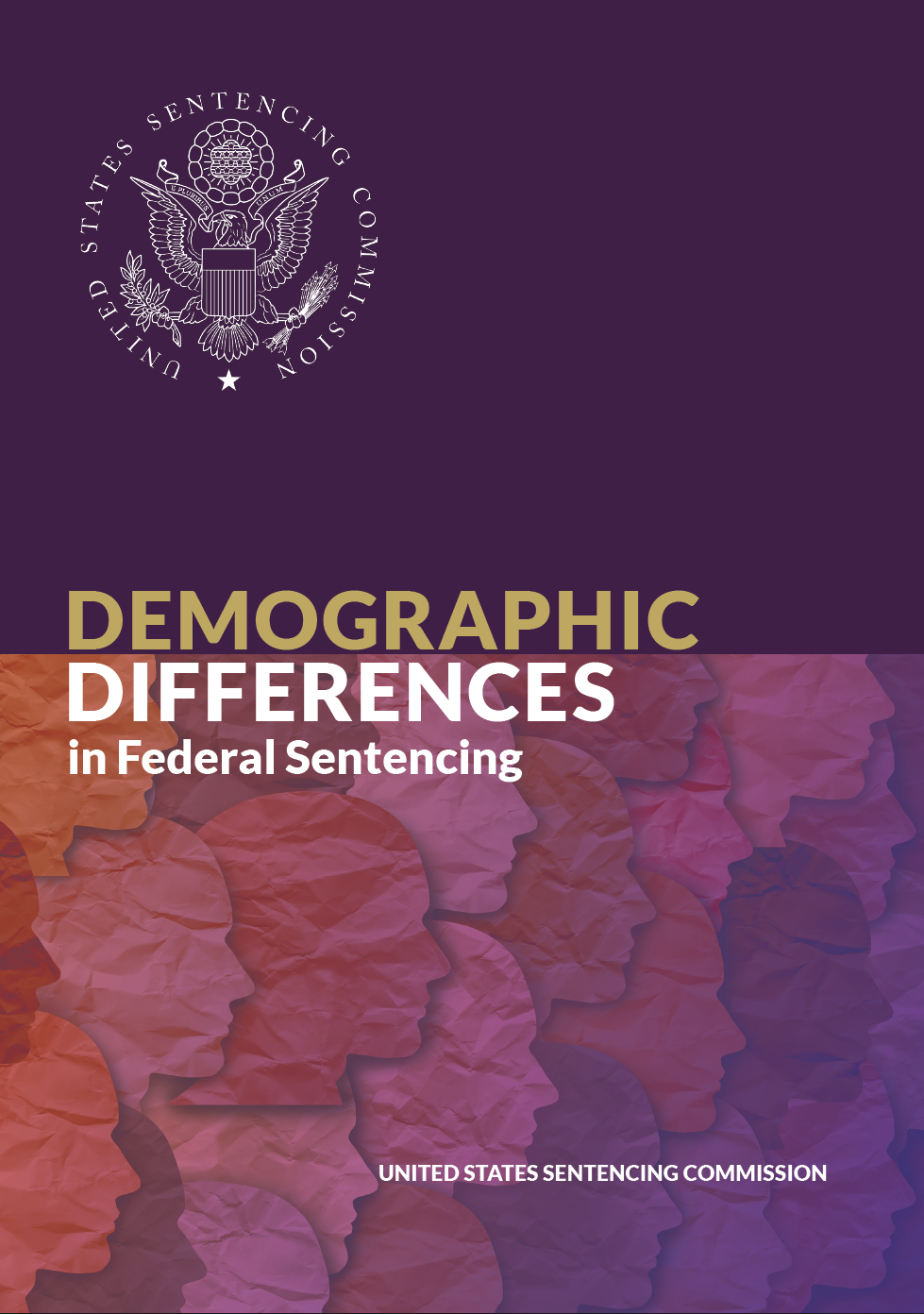Summary

Based on continued interest in this issue and consistent with best practices, the Commission re-examined and refined the analytical methods used in its previous reports to better understand sentencing disparity in the federal courts. Using new analytical techniques and newly available data, this report examines federal sentencing practices in the five fiscal years after the 2017 report to determine if the differences observed in the Commission’s prior reports continued to persist.
This report presents the results of that work, and furthers the Commission’s mandates to establish sentencing policies and practices that eliminate unwarranted sentencing disparities and to serve as a center for information on federal sentencing practices (view the press release).
Key Findings
Sentencing differences continued to exist across demographic groups when examining all sentences imposed during the five-year study period (fiscal years 2017-2021). These disparities were observed across demographic groups—both among males and females.
- Specifically, Black males received sentences 13.4 percent longer, and Hispanic males received sentences 11.2 percent longer, than White males (depicted below).
- Hispanic females received sentences 27.8 percent longer than White females, while Other race females received sentences 10.0 percent shorter.
The sentencing differences in the data the Commission examined largely can be attributed to the initial decision of whether the sentence should include incarceration at all rather than to the length of the prison term once a decision to impose one has been made. In particular, the likelihood of receiving a probationary sentence varied substantially by gender and race.
- Black males were 23.4 percent less likely, and Hispanic males were 26.6 percent less likely, to receive a probationary sentence compared to White males (depicted below).
- Similar trends were observed among females, with Black and Hispanic females less likely to receive a probation sentence than White females (11.2% percent less likely and 29.7% less likely, respectively).
The sentencing differences were less pronounced when the analyses focused solely on cases in which a sentence of imprisonment was imposed, which comprise 94 percent of all cases sentenced during the five-year study period.
- Focusing solely on these cases, Black males received lengths of incarceration 4.7 percent longer, and Hispanic male received lengths of incarceration 1.9 percent longer, than White males.
- There was little difference among females receiving a sentence of imprisonment. The only statistically significant difference in the length of imprisonment among females was among Hispanic females, who received lengths of incarceration 5.9 percent shorter than White females.
Differences in the length of imprisonment across demographic groups were concentrated among individuals who received relatively short sentences.
- Among individuals sentenced to 18 months or less incarceration, Black males received lengths of incarceration 6.8 percent longer than White males. The difference narrowed to 1.3 percent for individuals who received sentences of greater than 18 months to 60 months; but for sentences longer than 60 months, Black males received lengths of incarceration approximately one percent shorter than White males. Few differences were statistically significant when comparing sentences for females.
Across all analyses, females received sentences that were shorter, on average, than males.
- When examining all sentences imposed, females received sentences 29.2 percent shorter than males. Females of all races were 39.6 percent more likely to receive a probation sentence than males. When examining only sentences of incarceration, females received lengths of incarceration 11.3 percent shorter than males.
---
Related Reports:
- Influence of the Guidelines Report (December 2020)
- Inter-District Report (January 2020)
- Intra-City Report (January 2019)
- Demographic Differences in Sentencing (November 2017)
- 2012 Booker Report (December 2012)
